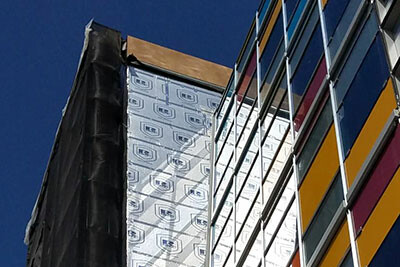
When it comes to walls, the use of continuous insulation can greatly improve performance and simplify design and installation. In particular, foam plastic insulating sheathing (FPIS) products can serve as an air barrier, water resistive barrier, and water vapor control/retarder, as well as cut down on the detrimental effects of thermal bridging.
Top Resources:
- FACTS: Moisture Control for Wall Assemblies
- Quick Guide: 3 Steps for Code-Compliant Use of Water Vapor Retarders and Foam Plastic Insulating Sheathing (FPIS) Continuous Insulation (ci)
- Quick Guide: Cladding Connections to Steel Frame Walls with Foam Plastic Insulating Sheathing (FPIS) Continuous Insulation (ci)
- Quick Guide: Window Installation Instructions for Walls with Continuous Insulation
- Design Guide for Above-grade Walls with FPIS ci
- Steel Frame Wall Calculator
- NFPA 285 Fire Testing Compliance Resources & Decision Tree
This program introduces the importance and functions of the Building Thermal Envelope (BTE) and then covers code compliance with the commercial energy and building codes for appropriate use of continuous insulation in all climate zones.
This new tool provides practical help by taking the user through a step-by-step design sequence to develop a code-compliant, high-performance wall with FPIS ci. Currently available for wood-frame and cold-formed steel frame walls, future work will include a similar tool for concrete/masonry.
Used appropriately with other control layers, the thermal control layers (insulation) of a cold-formed steel wall assembly can actually contribute to improved durability and energy efficiency. This presentation looks at five key building science topics together with new code requirements and design tools to help navigate and coordinate building code requirements for moisture control and energy code requirements for insulation.
This program, originally presented at IBS 2017, provides actionable prescriptive guidelines for integrated insulation and vapor control strategies.
This research report provides a central location for the identification of foam sheathing products that have been approved for use as an air barrier material in an air barrier assembly. Available as a sealed code compliance report.
Details and information on the use of CI to avoid thermal bridges
Discusses types of thermal bridges and their impacts as well as repetitive metal penetrations for cladding and component attachments.
This DrJ Research Report provided the basis for the current Quick Guide on Cladding Connections to Steel Frame Walls, published in July 2021.
In an article for Vinyl Siding Institute, Jay Crandell, P.E. highlights some key resources to help with code compliance when considering combined applications of vinyl siding (including insulated vinyl siding) and foam plastic insulating sheathing (FPIS) products on wood frame walls.
Foam plastics used in buildings of Types I-IV construction require an assessment of their ability to resist vertical and lateral flame spread. Determine if your assembly is required to comply with NFPA 285 Fire testing with this design guide.
In August 2004, the ASHRAE Journal ran Joseph Lstiburek's paper enttitled “Understanding Vapor Barriers.” After almost two decades, he has updated it to focus on rain and air control as well as vapor control – all things that “walls” need to do – hence the revised title, “Understanding Walls.”
ANSI/ABTG FS200.1 – 2022 contains a wealth of practical and actionable guidance for code-compliant use of foam sheathing on above-grade walls. This comprehensive resource is aimed at meeting the needs of designers, builders, installers, manufacturers, and code officials. Learn more here or download a copy.
ANSI/ABTG FS 100 establishes wind pressure resistance requirements for foam plastic insulating sheathing (FPIS) products used as exterior wall sheathing,
Research findings on the long-term performance of cladding attachments through foam sheathing. Covers fastening techniques, material expansion and contraction, and deflection (creep).
Information on the use of Polyiso in commercial wall applications
Information on the use of XPS in commercial wall applications
Information on the use of EPS in wall applications